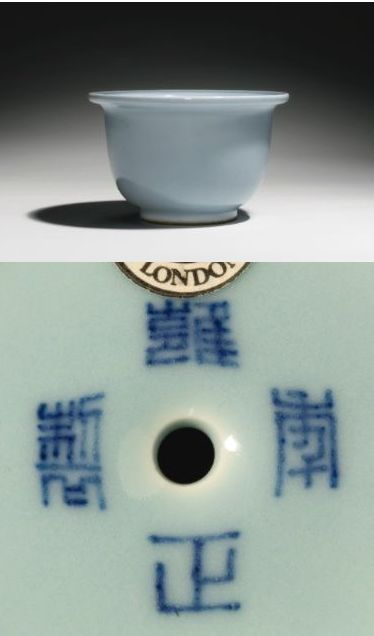
Clair-de-Lune Glazed, jardinière, Yongzheng seal mark, and period (1722-1735)
A high-fired soft, pale or lavender blue glaze with a low cobalt content (about 1%) first seen in the Kangxi period (1662-1722). Clair-de-lune-glaze was produced at the Imperial kiln for a limited number of shapes including some of the 'classic shapes for the scholar's table' ba da ma or 'Eight Great Numbers' as were the peachbloom-glaze, but are considerably more rare.
It was one of the most successful monochrome glazes made at Jingdezhen during the Kangxi period (1662-1722) and the softest hue of claire-de-lune was reserved exclusively for Imperial porcelains. The Chinese call this hue of blue, tian lan you, "sky after the rain". The name is the French expression for "moon-white".
The claire-de-lune glaze is today usually referred to as "pale blue". Some of these same shapes were also created with a white glaze or celadon glaze. Many people feel the paler the blue, almost a bluish white, the better. The color soon was used on other forms and continued to be seen throughout the Qing dynasty. A slightly darker shade is referred to as lavender blue and still darker, starch blue.
For more information see: J. Ayers, The Peachbloom Wares of the Kangxi period (1662-1722), T.O.C.S., 1999-2000, vol. 64. pp. 31-50, where a Claire-de-lune brushwasher in the Collections Baur, is illustrated p. 48, fig. 36(L). On p. 50, he proposes that rather than having been made for use, the peachbloom-glazed as well as the Clair-de-lune ba da ma examples, were more likely made to be given as presents to members of the court.
A